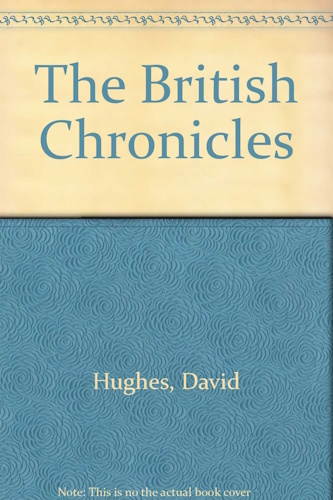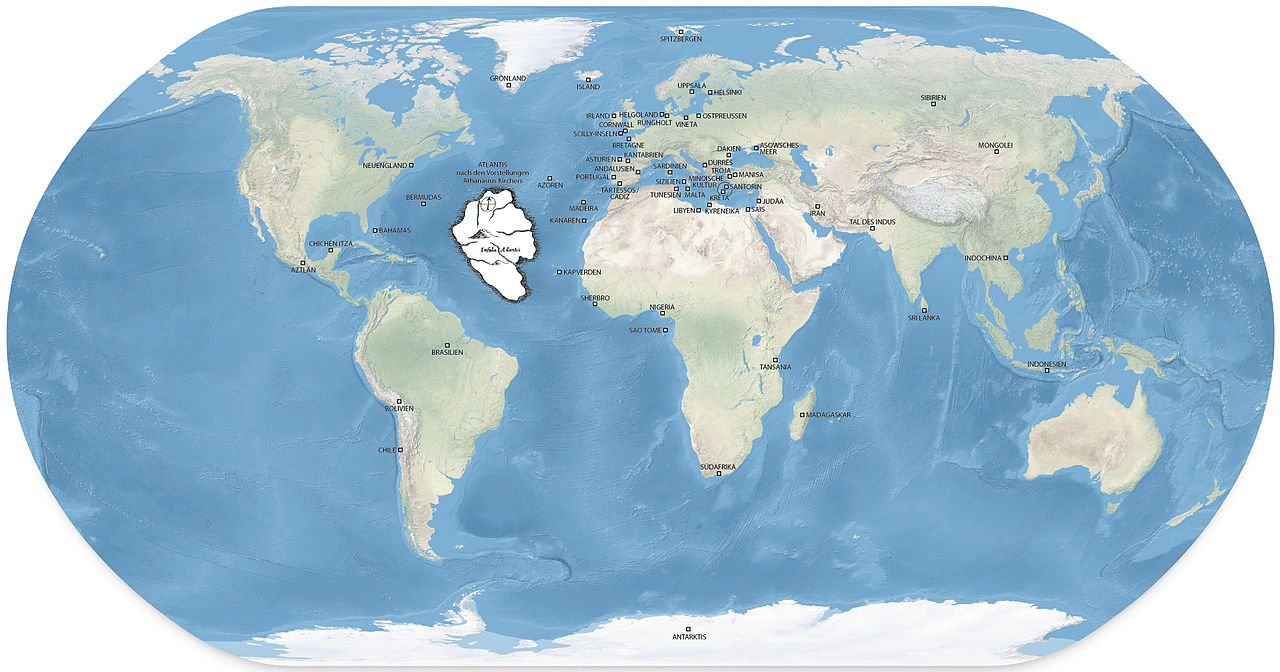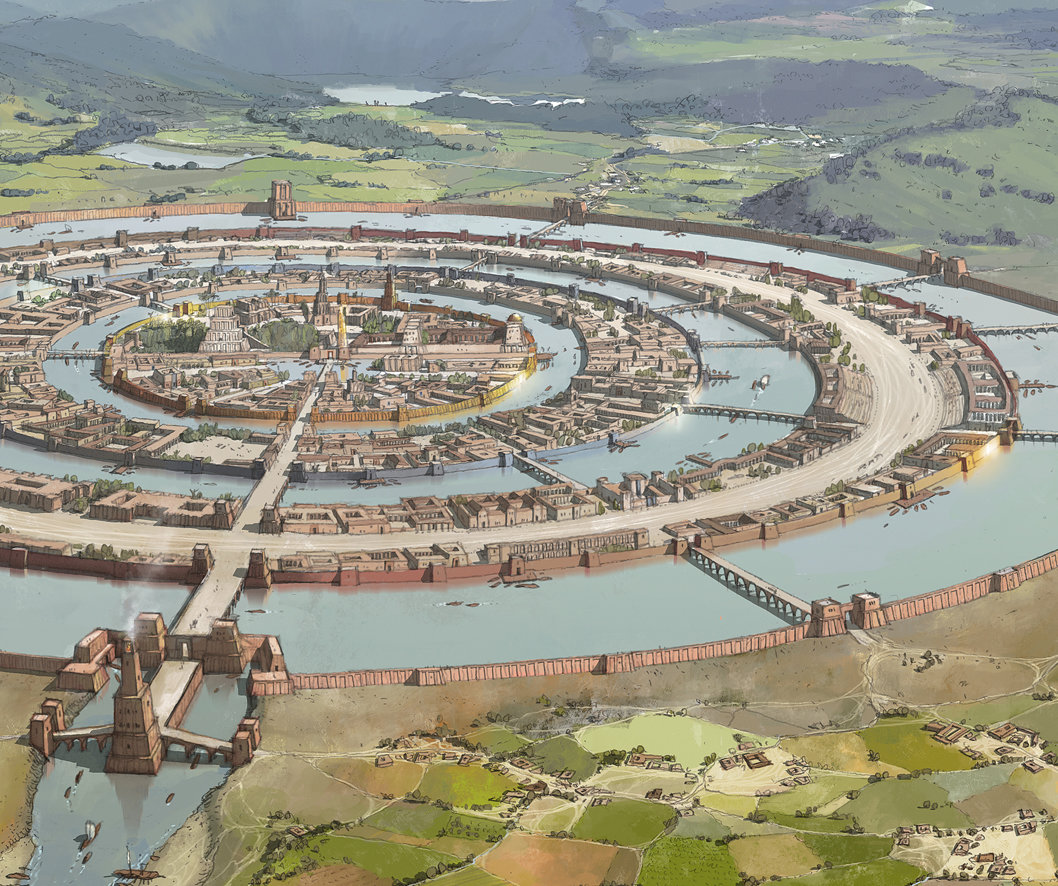
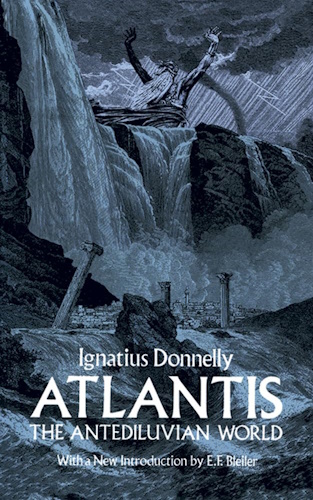

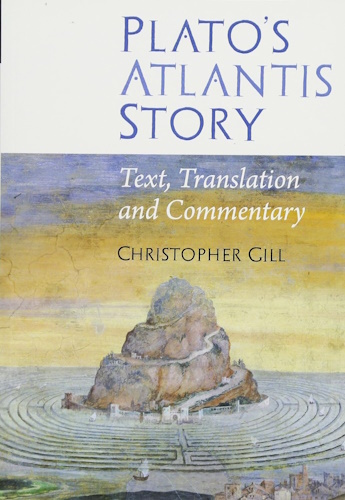

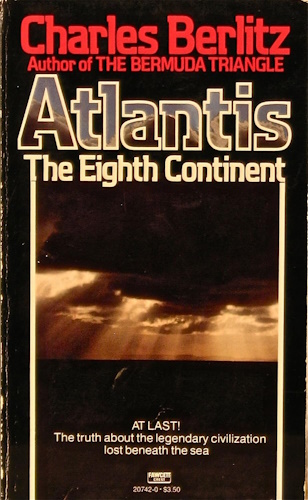



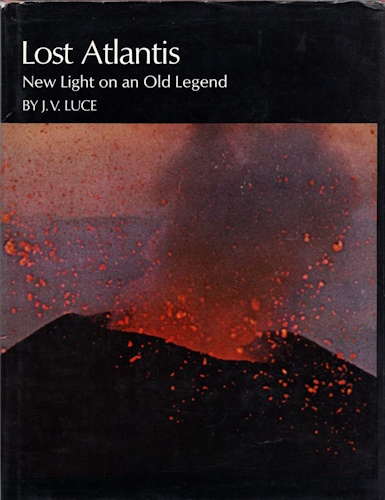

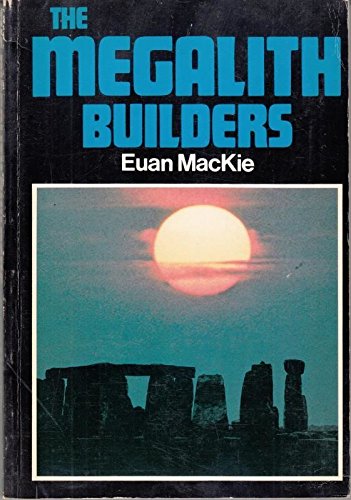

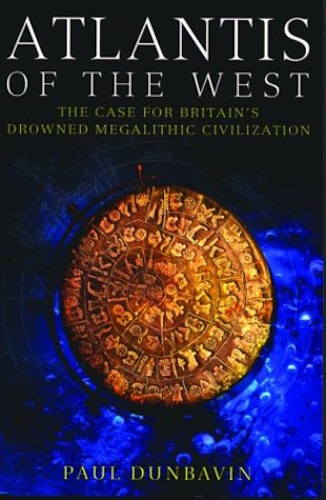

To quote Benjamin Rea, "yes, Atlantis did once exist"; although orthodox scholars have consistently sneered at all references to Atlantis. The story of Atlantis is recorded in the writings of the Greek classic Plato. Plato got his information about Atlantis from Solon's writings, who lived a century earlier, who got the story of Atlantis from archives in Egypt he read during a visit there. The Egyptians kept meticulous historical records, while the Greeks did not keep a written record of their own history. The story of Atlantis aroused extraordinary interest in Greece, and was "checked-out," so to speak, by Crantor, the first commentator of Plato's works, who went to Egypt around 300 BC to verify Solon's sources. Plato wrote that Atlantis was a large island or continent now submerged beneath the Atlantic Ocean except its mountain-tops which are today identified by able scholars as the Azore Islands. The Azores are nine small islands about 1000 miles west of Portugal in the Atlantic. Plato, whose record of Atlantis we have, says clearly that Atlantis was situated outside the "Pillars of Hercules," that is, the "Straits of Gibraltar," opposite the mouth of the Mediterranean Sea in the Atlantic Ocean, and by his description there can be little doubt that the Azore Islands are indeed the mountain-peaks of the "lost continent" of Atlantis. Atlantis, according to Plato, possessed a high civilization, which was suddenly destroyed by an horrific natural cataclysm and sank beneath the sea. The inhabitants of Atlantis were the Colossi, so-called by the Greeks because they were said to have been giants, the "giants" mentioned in the mythologies of nearly every ancient race, who settled in the islands and coasts of the Atlantic Ocean at the time of the "great migrations" in the Middle Stone Age when ancient peoples settled in their historic habitats. The Colossi appear in Greek Mythology as the rebellious "Titans," who, all except one tribe migrated from North-West Africa [Mauretania] and settled outside the "Pillars of Hercules" in the islands and coasts of the "western ocean" under the leadership of Atlas [formerly King of Mauretania] and his brothers, namely, Gadir (Gaderius) or Eumelus (Eumolus), Ampher[es] (Amphisus), Evaemon (Eudemon), Mneseus, Autochthon, Elasippus, Mestor, Diaprepes, and Azaes, all of whom were early patriarchs, each over one of the ten tribes of the Colossi, and all founded kingdoms and became kings. Atlas settled in the isle or island-continent of Atlantis while his brothers migrated onto other islands and coasts of the Atlantic. Gadir settled Spain; Ampher settled Britain; Evaemon settled France; Mneseus settled Burgundy; Autochthon settled Germany; Elasippus settled Italy, Sardinia, and Malta; Mestor remained at home in North-West Africa [Mauretania] with his tribe; Diaprepes settled Scandinavia; and Azaes settled America. Plato wrote: "all these [that is, Atlas and his brothers] and their descendants were the inhabitants and rulers of divers islands in the open sea". Atlas and his brothers, and their sisters, whom the brothers took as their wives, according to one myth, were the sons and daughters of the Greek sea-god Poseidon [the equivalent to the Roman sea-god Neptune] begotten of the mortal-woman Cleito (Kleito), the daughter of Evenor, an early classical king, and his wife, Leucippe, formerly a vestal-virgin; while, according to another myth, these brothers and sisters of Atlas appear as his sons and daughters while Atlas is himself called the son of the Greek patriarch Iapetos. Iapetos, according to mythology, was the son of Deucalion, the Greek Noah; while, according to legendary history, Iapetos is to be identified with Japheth, one of Noah's three sons, the Bible figure. Japheth is usually regarded as the ancestor of the Indo-Europeans, and not of the Atlanteans who are sometimes identified with the "giants" spoken of in the Bible in Genesis 6:4, who, upon comparison with the Bible verses Job 1:6;2:1 and 2 Peter 2:4,5, we learn were the off-spring of humans and extra-terrestrials. It is believed by some theologians that God created astral-beings as well as terrestrial-beings, and that the astral-beings had intercourse with mortal-women who gave birth to giants, demi-gods, and heroes, whose story is that of Greek Mythology. These giants, who were of mixed human and angelic and/or demonic birth, were in the earth in the years before Noah's Flood (Gen. 6:4), by which they were judged by God (2 Pet. 2:5) and those who survived had descendants who were later encountered by the Hebrews during their migrations (Num. 13:33).
The island-abode of Utnapishtim, the Sumerian Noah, visited by Gilgamesh, King of Erech [a Sumerian city-state], circa 2750 BC, may have been Atlantis? If Utnapishtim was Noah still alive then our modern concept of ancient chronology is very uncertain. Atlas, who may have been Noah's grandson according to one myth, may have supported his grandfather in his old age. Atlas appears in Greek Mythology to have been one of the rebellious giants, or "Titans," who having fought and been vanquished by the Greek gods of Mount Olympus was punished by having to forever carry the world-globe on his shoulders. Atlas, who gave his name not only to the island-continent of Atlantis but also to the Atlantic Ocean, according to Plato, was the first King of Atlantis and the ancestor of its royal house. Atlas had at least five wives, many children, and numerous descendants, of whom the senior-line always retained the kingdom, "which the eldest son handed on to his eldest son for many generations over the centuries in uninterrupted succession," wrote Plato.
The mysterious island called Hy-Brazil [var.: Brasil; Bressal; Bresil] which is mentioned in British Mythology was doubtless Atlantis; for its king was called the "King of The World". Hy-Brazil appears under many different names on medieval maps, and was the subject of "L'Isola Brazil" (Genoa, 1325), by Angelinus Dalorto, the renown cartographer. His thesis influenced the Portugese to give America the name "Brazil," although maps after Columbus' time still showed an island of that name in the North Atlantic. The northern most tip of Atlantis was said to have lied at the same latitude as Ireland but far out to sea. The capital city of Atlantis, called "Brasileia" by Piteas, where the "King of The World" was said to reside, was said by Plato to have been marvelous beyond description, attesting to the high level of civilization the Atlanteans had achieved in ancient times; and had developed a distinctive culture, which was the mother-culture of Egypt, Britain, and Mexico. The capital city of Atlantis was remarkable, says Plato, for the large scale and decorative splendor of its public buildings, its temple, and the imperial palace, which were all built of white, black, and red sandstone, or marble. The city's port, or harbor, says Plato, was constantly busy and "full of vessels and merchants from all parts" that made Atlantis very wealthy and prosperous.
The "New Stone Age" saw the rise of Atlantis to a great power. Atlantis began expanding during the New Stone Age all along the coasts of the Atlantic establishing out-posts and colonies, and by the Bronze Age had become the centre of a trans-Atlantis maritime empire with colonies in Western Europe, North-West Africa, the British Isles, Scandinavia, as well as North America. Atlantis, about the beginning of the Early Bronze Age, expanding into western Mediterranean waters, according to Plato, subdued "the parts of Libya [North Africa] as far as Egypt, and the parts of Europe as far as Tyrrhenia [Italy]," and established an out-post on the Isle of Malta. It was around the time of the beginnings of Egyptian History when Menes, reckoned as Egypt's first king, the King of Upper Egypt [Pathros], conquered Lower Egypt [Kaphtor], unified the country, and founded Egypt's first national dynasty, circa 3000 BC. His conquest of Lower Egypt caused the migration of the Mizraimite Caphorites from the Egyptian delta to the isle of Crete. They were the pre-Minoan people of Crete. Meanwhile, the Canaanites of Palestine were establishing colonies and found Sidon, Avaris, and Troy. The settlers of Sidon became the Phoenicians who found Tyre, Beruit, Arka, and other cities. The settlers of Avaris [Tanis] became the Belgae of Egypt, who gave Egypt its Second-Dynasty, and later upon their expulsion by Egypt's Third-Dynasty migrated to Greece and found Athens. The Belgae in Greece were the Pelasgic Greeks [pre-Greeks]. The Canaanite settlers of Troy were the first of nine different peoples who occupied the city in ancient-times.
Explorers from Atlantis were sent out to neighboring islands and coasts during the New Stone Age, some of whom came to the British Isles and engaged in active barter with the natives, who were also Colossi by race yet were not as technically advanced as their cousins. The Atlanteans were soon mining tin in Britain and copper in Ireland to make bronze in their smelteries on their home-island of Atlantis, which the Atlanteans then exported to the British Isles, which began the Bronze Age in Britain.
It was either trade, that is, the exchange of British tin and copper for Atlantean bronze, that began the Bronze Age in Britain; or else it was the local manufacture of bronze in Britain by the Britons themselves from their own deposits of tin and copper that began the Bronze Age in Britain.
Colonists from Atlantis then followed and settled in the British Isles during the New Stone Age, establishing work-camps to mine tin and copper, introducing the megalithic culture, the culture of Atlantis, as well as the religion of Atlantis, which was Sumerian zeroashtaism, which religion had become worldwide in ancient times. Ignatius Donnelly says that the mythologies of Egypt, Britain, and Mexico, represented the original religion of Atlantis, which he says was the worship of a god personified by the sun. This was the second wave of Atlanteans to come to Britain. This was not a migration like the first wave, but rather immigration that came about due to trade and industry which turned into commerce which attracted the Atlanteans to the British Isles. And, it followed that Britain became a colony or satellite-state of the great Atlantean empire. The Atlanteans, called the Colossi by the Greeks because they were said to have been giants, appear in British Mythology as the "aborigines" of the British Isles. The "giants" of British Mythology are the people called the "Picts" of British History, which is a name given to them by the later Romans that is an abbreviation of the Latin "populii pictii" meaning "painted-people" for their custom of wearing war-paint in battle. This same custom practiced also by Amerian Indians must have had a common origin. The Picts are generally regarded by historians as the earliest inhabitants of the whole British Isles. The Picts, that is, the Colossi, appear in Irish Mythology as the Fomorians. The Fomorians [Fomoire; Fomhoire; Fomorii] derived their name from the Irish word "fomhoire" meaning "giant," as portrayed in Irish myths. The Fomorians ["giants"] were the Irish settlement of the Colossi, or Atlanteans. The Fomorians, described in Irish Mythology as giants, were the pre-Irish inhabitants of Ireland and are found occupying the isle when the ancestors of the historic Irish people arrive. The Fomorians of Irish Mythology are known in Irish History as the Cruithni, which is the Irish name for the Picts.
The construction of megaliths was well under way in the British Isles by this time, and the religion of Atlantis early integrates with native or local cults in the British Isles during the New Stone Age and emerges by the Bronze Age as "druidism," the religion of Britain, Ireland, and France, in ancient times. This squares with Caesar's writings, who wrote that druidism evolved in Britain and was brought from there to Gaul, which statement is supported by archaeologists. Hence, druidism could not have been a Celtic religion, because the Celts came from Gaul to Britain.
There was beyond Atlantis, wrote Plato, an archipelago of islands [the British Isles] that by way of the Atlanteans traveled to other islands and passed to an opposite continent, North America. It was the same route along the northern arc that the later Vikings took when they found their colonies in Iceland, Greenland, and Canada [Vinland]. Plato was referring to one of three waves of the Colossi to settle in America. The first wave of the Colossi came to America as settlers during the Middle Stone Age under the leadership of Azaes, one of the sons or brothers of Atlas, who with his tribe appear to have settled along the Great Lakes in Illinois, Michigan, and Wisconsin, and along the Ohio and upper Mississippi rivers, which region was anciently called "Aztalan" ["Aztlan"], after Azaes, reckoned as America's first king and the ancestor of its first royal house. There is another myth that says it was not Azaes, but his son Coxcox who after wandering for many years finally established a settlement in North America, called "Aztalan" after his father, and was America's first king. These were the so-called "Mound-Builders" who built the large earthen-mounds found in that region. The contents found in the mortuary-mounds of the Mississippi Valley are exactly like those found in British earthen-mounds and those of Western Europe, such as the stone chests containing wooden coffins and the articles buried with the dead, which points to a common origin for the ancient inhabitants of America and those of Britain and Western Europe in the Colossi race of Atlantis. These earthen-mounds were the parent-form, ancestor, or proto-type of the pyramids. The sunken ruins of the pyramid-complex of Aztalan has been discovered in Rock Lake about 40 miles west of Milwaukee. The question of the presence of pyramids in Atlantis arises here, for as the mother-country to Egypt, Britain, and Mexico, there is little doubt that the pyramid developed from the earlier earthen-mounds of the Atlanteans, who, as the builders of these, are sometimes called "Mound-People". The step-pyramid at Saqqara in Egypt, the parent-form of Egypt's pyramids, is built exactly like the mortuary-mound of Silsbury Hill in Britain, whose design is exactly like the earthen-mounds of Mexico. The "Mound-Builders" were the ancestors of the Aztecs, the Chichimec tribes, who, advancing down the Mississippi and spreading-out over its tributaries, eventually migrated to Mexico and were the successors of the great nations of Central America, who originally were Colossi by race but have since been absorbed by a mongoloid people, the "Amerinds" [early cousins of the later Eskimo-Aleutians], who, called "Red Indians" by later Europeans, migrated to America from Asia across the Bering Straits. The Colossi in America were the scattered tribes of so-called "White Indians" from Ohio to Peru. There are various Indian legends of "giants" as the aborigines of America. Indeed, the mounds and their artifacts are far more ancient than the earliest remnants of native Indian culture. The second wave of the Colossi came as traders, colonists, and troops from Atlantis, as part of Atlantean expansion during the empire era of Atlantean History in the New Stone Age or Early Bronze Age. It was during this period that the Atlanteans built outposts in America, among which were: (a) the Isle Royale in Lake Superior off Michigan; (b) Mystery Hill, North Salem, New Hampshire; and (c) the isle of Bimini which lies among the Bahamas off Florida. The third wave of the Colossi came as refugees from Atlantis at the time of its destruction in the Late Bronze Age and settled along the shores of the Gulf of Mexico, spreading thence, in time to the plains and mountains of New Mexico and Colorado and to the tablelands of Central America where they appear as the Olmecs, Xicalancans, and Mayans, who were the first of the great nations of Central America.
Atlantis, expanding into eastern Mediterranean waters, overran Greece, the Near East, and Egypt about 2700 BC, but by 2600 BC the Atlanteans had been driven out of the eastern Mediterranean region by the Mesopotamians [Sumerians], under the Akkadian emperor Narim-Sin, and by 2100 BC had been driven out of the western Mediterranean region by the Indo-Europeans, or, more precisely, the Minoans, though some colonies of Atlanteans held out for a while in the Near East and were the "giants" encountered by the Hebrews, that is, the Anakim, Zamzumim, and Emim. Goliath, the giant whom David slew, was undoubtedly descended from a scattered remnant of a colony of Atlanteans in Canaan who had mixed with the native Canaanites and other newcomers to the region. It appears that after the Atlanteans had been driven out of the Near East they settled in the Caucasus, the Crimea, and in Bulgaria, however, were later driven from those areas and migrated on to Syria, Northern Iran, the Malabar Coast, the Nilgiri Hills of India, to South-East Asia, and eventually to the South Sea Islands, where they disappear from history around the time of the migrations of the Polynesians who settled in the islands of the Pacific Ocean. Following their wars with the Mediterraneans, the Atlanteans of Atlantis withdrew into the Atlantic Ocean where they reigned supreme and appear to have been isolationists not having any dealings with the Mediterraneans for the next five centuries except for the piracy of Mediterranean ships, which happened to venture beyond the Straits of Gibraltar into the Atlantic, whose crews were taken captive and made into slaves to work the mines and smelteries of Atlantis and its colonies. Atlantis lost its hegemony over Western Europe during the Middle Bronze Age due to the encroaches of the "Beaker-People," who came to Western Europe as refugees as a result of the migrations of peoples caused by the advances of the Indo-Europeans.
It was reported by the Greek classic Plato that Atlantis was destroyed in a terrible convulsion of nature and to have disappeared with nearly all of its inhabitants beneath the sea except its mountain-tops, now the Azore Isles, while it was again warring with the Mediterraneans "900 [not 9000] before Solon's time," that is, circa 1500 BC. The 9000 years date which Plato gives is an error according to many scholars who agree that an extra "0" has made its way into the text and that 900 years is more likely, for upon this basis the history of Atlantis could fit well into the framework of known historical events. Indeed, the history of Atlantis fits perfectly in the outline of Ancient Chronology using the "900" years date. Plato wrote that Atlantis, for the second time, "came forth from the outer ocean in a war between all those who dwelt outside the Pillars of Hercules and all those who dwelt within them." He says: "this vast empire gathered all its forces together and undertook to conquer all the lands that border the Mediterranean Sea." It is implied that Britain was an ally of Atlantis and contributed forces to the expedition. And, Plato wrote that "the host of invaders marched in wanton insolence upon all Europe and Asia together, issuing yonder from the Atlantic Ocean." The Atlanteans destroyed the Minoan Empire of Crete, attacked Mycenean Greece, and also 18th-Dynasty Egypt. Athens withheld siege in Greece and repulsed the invaders, however, the Greek Navy, while in pursuit, was destroyed in a storm.

Mysterious underwater pyramid found near Azores - 12 February 2014
A Portuguese sailor claims to have discovered a large underwater pyramid, between the islands of Sao Miguel and Terceira, in the Azores.
Diocleciano Silva couldn't believe what his eyes were telling him. As he was sailing in the Atlantic Ocean looking for fish, he spotted a perfectly-shaped pyramid structure on the sonar.
After checking the GPS devices and maps again, Silva confirmed that the unknown underwater construction was lying at 40 meters (131 feet). Square, and aligned with the four cardinal compass directions. The pyramid's base is estimated to have 8000 square meters.
The strange discovery was reported to the Portuguese Hydrographic Institute. Could it be an old civilization, a volcanic construction, the effects of ice age glaciation?
No answers have been given. The exact coordinates have not been unveiled. The underwater pyramid of the Azores is said to be 60-meter (196 feet) tall. There could be more.
"It's impressive because of its forms. It's a perfect pyramid. Moreover, the vertices are precisely oriented North-South, just like the pyramids of Giza, in Egypt," explains Diocleciano Silva.
The legendary Atlantis is the ultimate sailor's dream. Has the Portuguese yachtsman found it? What are the secrets behind the Azorean submerged pyramid? Is it the work of man or only a natural coincidence?
There were some Atlanteans who escaped the destruction of their home-island and made their way to their overseas colonies or either found new colonies: some traveling east, others north, and some west. Those east settled in the Pyrenees Mountains between France and Spain and became the Basque. Those north settled in the northern parts of the British Isles, the Nordreys, and in the area around the Trondheimfjord in Western Norway, and became the Atecotti [Attacotti]. This was the third and last wave of Atlanteans to settle in the British Isles. And those west settled in Central America and became the Olmecs, the ancestors of the Mayans. Of these, the Basque, the Atecotti, and the Olmecs, only the Basque have survived as a nationality into modern times even though they have mixed over thousands of years with successive waves of invaders and colonists. Note that the Basque Language has nothing in common with any modern European language but has some common traits with some languages of the native American Indians. The Atecotti of Britain were said by the Romans to have spoken a language that was unlike the Celtic tongue but was akin to the Basque language.
The Atlantean kingdom in Britain was founded by a group of Atlantean refugees from Atlantis who came following the destruction of their home-island and settled in their colonies in the British Isles, in parts of Ulster, Northern Scotland, and the Nordreys [Orkneys, Shetlands, and Faroes], and became the Atecotti [Attacotti], so-called by later Romans. This group of Atlantean refugees migrated under the leadership of the Atlantean prince Creon, who was the first tribal chief/king of the Atecotti and the ancestor of their royal clan, the Creones, that is, Britain's Third-Dynasty. Creon (Kreon) was a cousin of the last King of Atlantis and therefore a male-line descendant of Atlas, the first King of Atlantis and the founder of its dynasty. The Atecotti appear to have settled at first in the Nordreys, that is, the Northern Isles, namely, the Orkneys, the Shetlands, and the Faroes, from where they spread-out to Scotland, the Isle of Man, and to Norway. The Atecotti in Scotland became a major tribe rivaling the later Caledonians and Albanese. Their settlement in Norway was centered around the Trondheimsfjord in Western Norway, which was probably the legendary kingdom of "Thule" mentioned by classical writers. The classic Pytheas wrote (300 BC) that Thule was six days sail from Britain. He was probably referring to the old Norwegian kingdom of Hlade, in the Trondelag, the area around the Trondheimsfjord in Western Norway, whose kings were the ancestors of the medieval Trondheim jarls/earls. There is a difference of opinion as to where Thule was: some say the Orkneys; some believe it to have been Iceland; and some say Scandinavia. The Atecotti, whom the Romans said were cannibals, built the "brochs," wheel-houses, and "cairns," which are found mainly in the far north of Scotland and the Nordreys. The "brochs" were high, round towers, built for defensive purposes; the wheel-houses were round stone huts with radial piers; and the "cairns" were elaborate interconnected groups of stone-built houses. The Atecotti later joined the Caledonians and Albanese in a series of wars with the Romans, who collectively called them "the Picts".
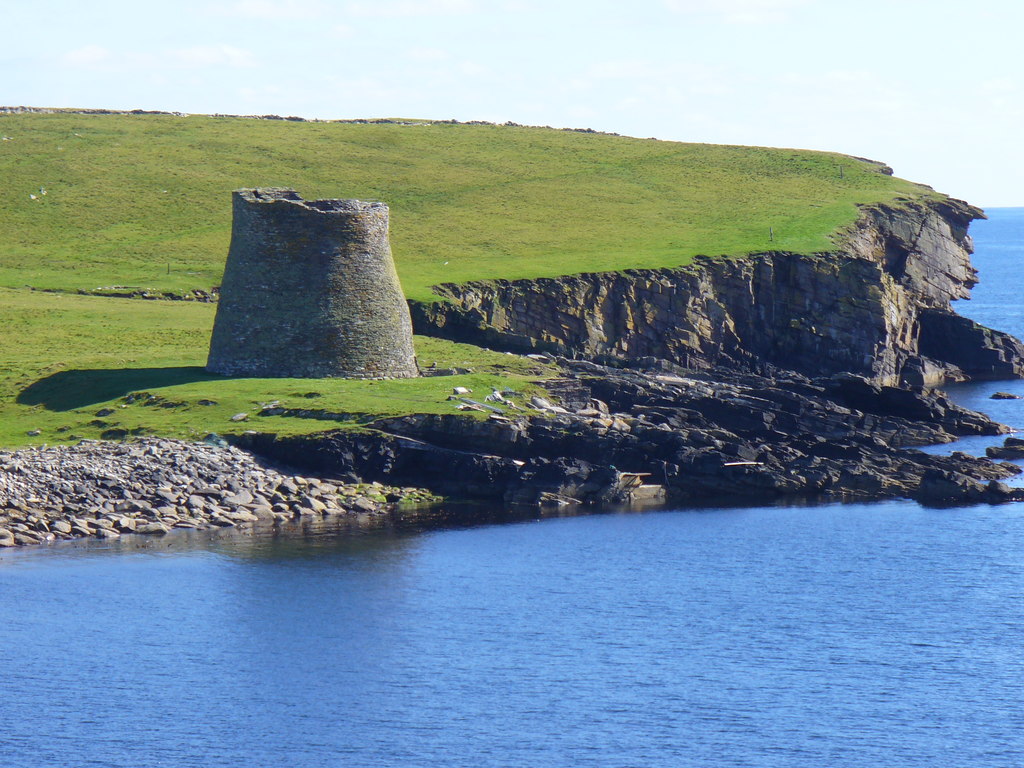
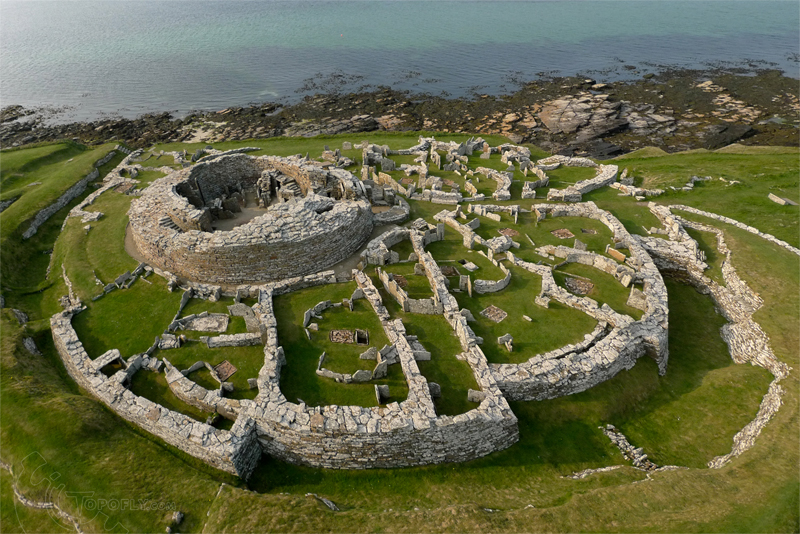
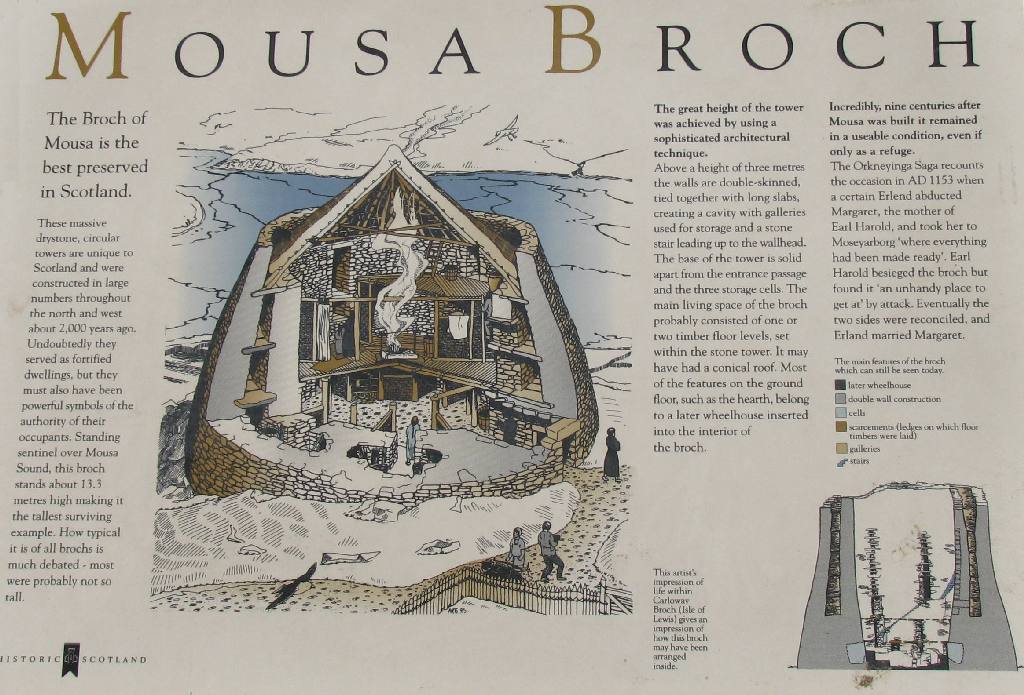
The cataclysm that destroyed Atlantis may be remembered in British myths of the disappearance of such legendary cities as "Mevonia," now submerged somewhere in the middle of Irish Sea [note: the islands of the Irish Sea, e.g., Isle of Man, etc., were one time called the "Mevanian Islands".]; or "Lyonesse," now submerged off Land's End, Cornwall, England; and "Ker-Is," now submerged in the English Channel off Brittany, France, which was part of a chain of islands that are all now gone except for the Channel Islands. The island-city of "Hy-Brazil," which legend says is now submerged somewhere in the North Atlantic "far out to sea" off Ireland, is thought to actually be a reference to Atlantis, whose northern fringe may very well have reached as far north as the British Isles. The "lost cantref of Wales" ["Cantref-y-Gwaelod"], the "Lowlying Land," which marked the ancient western coast-line of Wales, now submerged under Cardigan Bay, was flooded possibly at the same time of the break-up of the island-city of Mevonia into the Irish Sea; which may have occurred possibly at the same time of the disappearance of "the Green Islands," now submerged off Milford Haven, Wales, in the Irish Sea. The "Triads" report "three awful events," which were (1) an earthquake/volcano eruption [described as "a trembling of the fiery torrent, until the earth was rent to the abyss"], (2) an unusually hot summer [during which "the trees and plants took fire by the burning heat of the sun], and (3) a deluge [in which "the greatest part of the population of the isle was swept away by water"]. It has been suggested that this was the time of the formation of Iceland from a series of active volcanoes that rose high in the waters of the North Atlantic, which would accompany major physical upheavals in nature in the northern hemisphere. The destruction of Atlantis in a cataclysmic upheaval in nature may have put so much ash into the atmosphere that temperatures dropped causing what we call today a "nuclear winter," resulting in a "mini-ice age," which caused the population of Britain to drastically decline in numbers, which essentially opened up the country to conquest by the Battle-Axe People.
There is a legend that the last King of Atlantis, sometimes called Cronos [II], or Crosus, or Crocus, was survived by an only child, a daughter, Antyllia [Electra], who escaped the destruction of Atlantis in the company of a group of ex-slaves of various Mediterranean nationalities, one of whom, a Greek prince, Corythus [Demetrius], she later was to marry and by him give birth to the epic hero Dardan, the ancestor of Brutus, who later found the British Iron Age Royal House.
Reference
01. Atlantis: The Antediluvian World
, by Ignatius Donnelly, 1882
02. Plato, the Atlantis story: Timaeus 17-27, Critias, by Christopher Gill, 1980
03. Atlantis, the eighth continent
, by Charles Berlitz, 1984
04. Lost Atlantis: New Light on an Old Legend
, by John V. Luce, 1969
05. The Megalith Builders
, by Wallace E. Mackie, 1977
06. Atlantean traditions in ancient Britain
, by Anthony Roberts, 1977
07. Atlantis of the West: the case for Britain's drowned megalithic civilization
, by Paul Dunbavin, 2003
08. Atlantis in Ireland
, by Henry O'Brien, 1976
09. Lost Cities of Atlantis, Ancient Europe & the Mediterranean (Lost Cities Series)
, by David H. Childress, 1996
10. Atlantis in America
, by Lewis Spence, 1925
11. Maya/Atlantis: Queen Moo and the Egyptian Sphinx, by Augustus Le Plongeon, 1896
12. Atlantis and Egypt: with other selected essays, by John G. Griffiths, 1991
13. From Atlantis to the Sphinx
, by Colin Wilson, 1996
14. Atlantis And The Giants
, by Denis Saurat, 1957
15. Giants: The Vanished Race of Mighty Men
, by Roy Norvill, 1979
16. Fee, fi, fo, fum;: Or, The giants in England (Psyche miniatures. General series)
, by Harold J. Massingham, 1926
![]()
![]()
Disclaimer:
Some material presented will contain links, quotes, ideologies, etc., the contents of which should be understood to first, in their whole, reflect the views or opinions of their editors, and second, are used in my personal research as "fair use" sources only, and not espousement one way or the other. Researching for 'truth' leads one all over the place...a piece here, a piece there. As a researcher, I hunt, gather and disassemble resources, trying to put all the pieces into a coherent and logical whole. I encourage you to do the same. And please remember, these pages are only my effort to collect all the pieces I can find and see if they properly fit into the 'reality aggregate'.
Personal Position:
I've come to realize that 'truth' boils down to what we 'believe' the facts we've gathered point to. We only 'know' what we've 'experienced' firsthand. Everything else - what we read, what we watch, what we hear - is what someone else's gathered facts point to and 'they' 'believe' is 'truth', so that 'truth' seems to change in direct proportion to newly gathered facts divided by applied plausibility. Though I believe there is 'truth', until someone representing the celestial realm visibly appears and presents the heavenly records of Facts And Lies In The Order They Happened, I can't know for sure exactly what "the whole truth' on any given subject is, and what applies to me applies to everyone. Until then I'll continue to ask, "what does The Urantia Book say on the subject?"
~Gail Bird Allen
![]()
![]()














-
Urantia Book, 44:0.11 - The Celestial Artisans
Never in your long ascendancy will you lose the power to recognize your associates of former existences. Always, as you ascend inward in the scale of life, will you retain the ability to recognize and fraternize with the fellow beings of your previous and lower levels of experience. Each new translation or resurrection will add one more group of spirit beings to your vision range without in the least depriving you of the ability to recognize your friends and fellows of former estates.
-
Princess Bride 1987 Wallace Shawn (Vizzini) and Mandy Patinkin (Inigo Montoya)
Vizzini: HE DIDN'T FALL? INCONCEIVABLE.
Inigo Montoya: You keep using that word. I do not think it means what you think it means. -
Urantia Book, 117:4.14 - The Finite God
And here is mystery: The more closely man approaches God through love, the greater the reality -- actuality -- of that man. The more man withdraws from God, the more nearly he approaches nonreality -- cessation of existence. When man consecrates his will to the doing of the Father's will, when man gives God all that he has, then does God make that man more than he is.
-
Urantia Book, 167:7.4 - The Talk About Angels
"And do you not remember that I said to you once before that, if you had your spiritual eyes anointed, you would then see the heavens opened and behold the angels of God ascending and descending? It is by the ministry of the angels that one world may be kept in touch with other worlds, for have I not repeatedly told you that I have other sheep not of this fold?"
-
Urantia Book, Foreword - 0:12.12 - The Trinities
But we know that there dwells within the human mind a fragment of God, and that there sojourns with the human soul the Spirit of Truth; and we further know that these spirit forces conspire to enable material man to grasp the reality of spiritual values and to comprehend the philosophy of universe meanings. But even more certainly we know that these spirits of the Divine Presence are able to assist man in the spiritual appropriation of all truth contributory to the enhancement of the ever-progressing reality of personal religious experience—God-consciousness.
-
Urantia Book, 1:4.3 - The Mystery Of God
When you are through down here, when your course has been run in temporary form on earth, when your trial trip in the flesh is finished, when the dust that composes the mortal tabernacle "returns to the earth whence it came"; then, it is revealed, the indwelling "Spirit shall return to God who gave it." There sojourns within each moral being of this planet a fragment of God, a part and parcel of divinity. It is not yet yours by right of possession, but it is designedly intended to be one with you if you survive the mortal existence.
-
Urantia Book, 1:4.1 - The Mystery Of God
And the greatest of all the unfathomable mysteries of God is the phenomenon of the divine indwelling of mortal minds. The manner in which the Universal Father sojourns with the creatures of time is the most profound of all universe mysteries; the divine presence in the mind of man is the mystery of mysteries.
-
Urantia Book, 1:4.6 - The Mystery Of God
To every spirit being and to every mortal creature in every sphere and on every world of the universe of universes, the Universal Father reveals all of his gracious and divine self that can be discerned or comprehended by such spirit beings and by such mortal creatures. God is no respecter of persons, either spiritual or material. The divine presence which any child of the universe enjoys at any given moment is limited only by the capacity of such a creature to receive and to discern the spirit actualities of the supermaterial world.
-
Urantia Book, 11:0.1 - The Eternal Isle Of Paradise
Paradise is the eternal center of the universe of universes and the abiding place of the Universal Father, the Eternal Son, the Infinite Spirit, and their divine co-ordinates and associates. This central Isle is the most gigantic organized body of cosmic reality in all the master universe. Paradise is a material sphere as well as a spiritual abode. All of the intelligent creation of the Universal Father is domiciled on material abodes; hence must the absolute controlling center also be material, literal. And again it should be reiterated that spirit things and spiritual beings are real.
-
Urantia Book, 50:6.4 - Planetary Culture
Culture presupposes quality of mind; culture cannot be enhanced unless mind is elevated. Superior intellect will seek a noble culture and find some way to attain such a goal. Inferior minds will spurn the highest culture even when presented to them ready-made.
-
Urantia Book, 54:1.6 - True And False Liberty
True liberty is the associate of genuine self-respect; false liberty is the consort of self-admiration. True liberty is the fruit of self-control; false liberty, the assumption of self-assertion. Self-control leads to altruistic service; self-admiration tends towards the exploitation of others for the selfish aggrandizement of such a mistaken individual as is willing to sacrifice righteous attainment for the sake of possessing unjust power over his fellow beings.
-
Urantia Book, 54:1.9 - True And False Liberty
How dare the self-willed creature encroach upon the rights of his fellows in the name of personal liberty when the Supreme Rulers of the universe stand back in merciful respect for these prerogatives of will and potentials of personality! No being, in the exercise of his supposed personal liberty, has a right to deprive any other being of those privileges of existence conferred by the Creators and duly respected by all their loyal associates, subordinates, and subjects.
-
Urantia Book, 54:1.8 - True And False Liberty
There is no error greater than that species of self-deception which leads intelligent beings to crave the exercise of power over other beings for the purpose of depriving these persons of their natural liberties. The golden rule of human fairness cries out against all such fraud, unfairness, selfishness, and unrighteousness.

